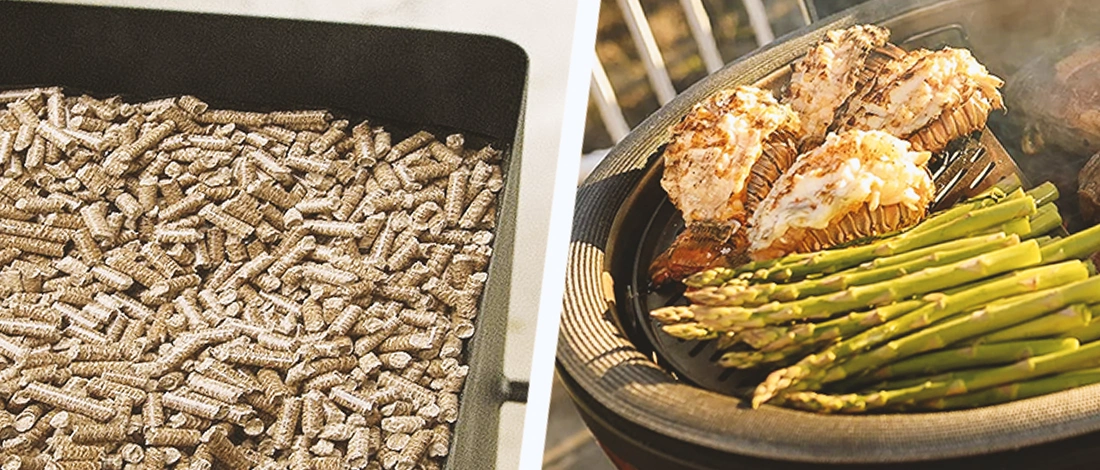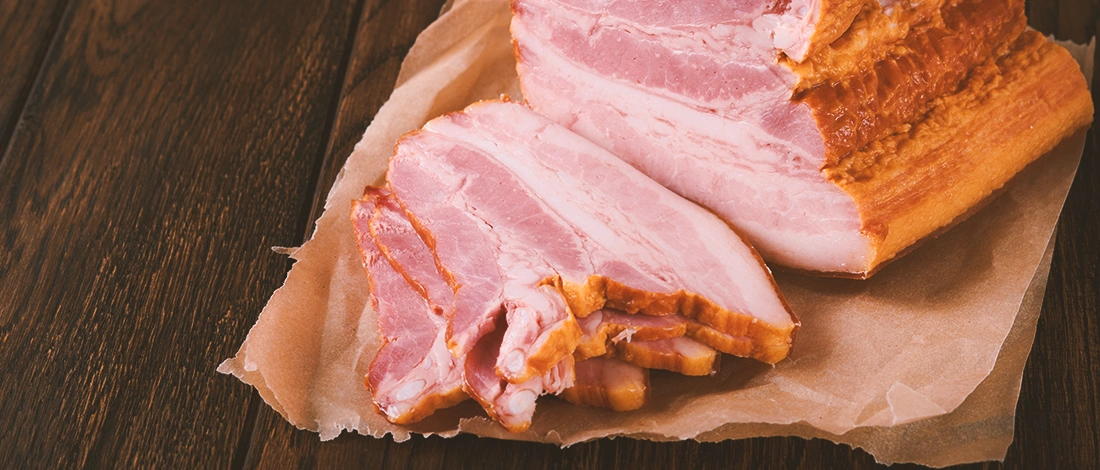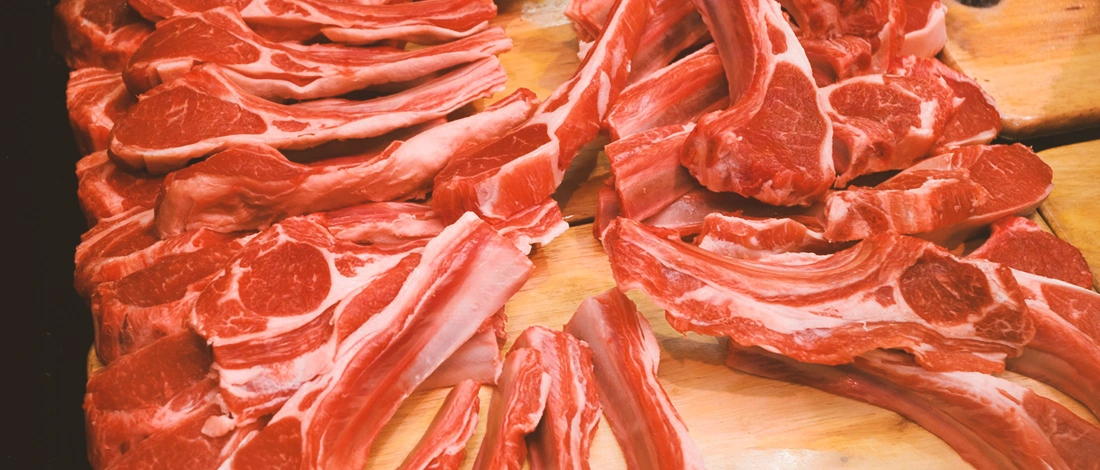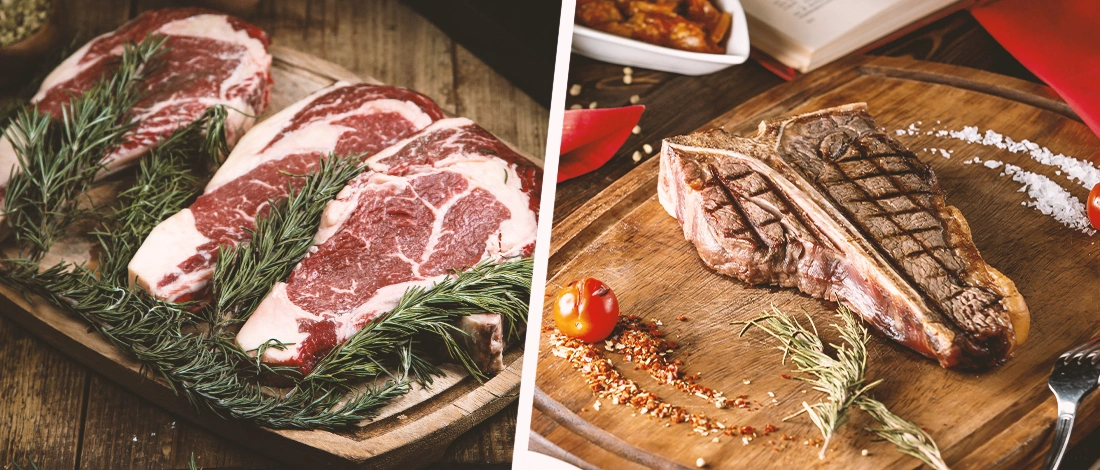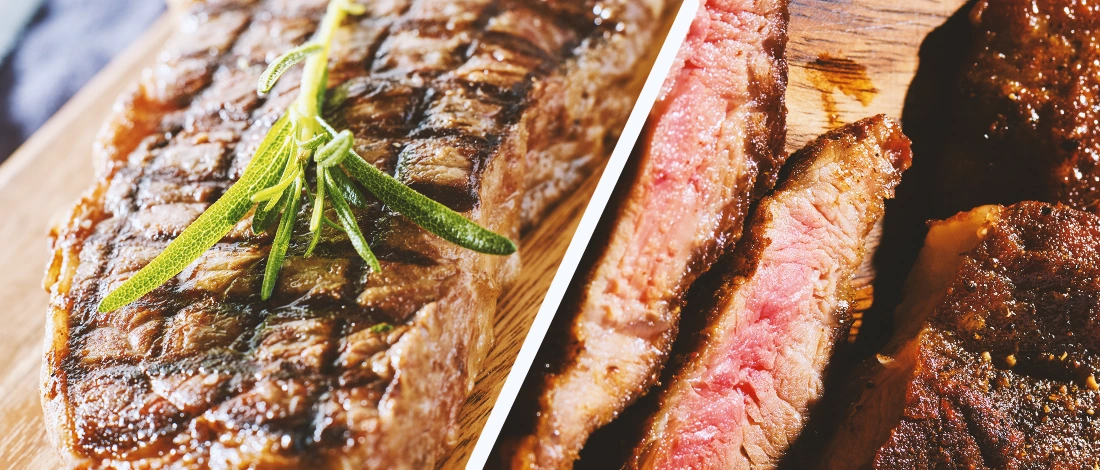Over the years, smoker technology has advanced from classic wood-fired smokers to today's modern pellet and electric smokers.
So, is one of these smokers better than the other? I am a dedicated carnivore who has spent decades honing my skills on all types of smokers.
Carnivore Style’s team has also explored these smokers, and today, I’ll share what I’ve learned.
Quick Summary
- Pellet and electric smokers differ in fuel source, flavor, ease of use, cost, temperature versatility, size, moisture, cleaning, and safety.
- Pellet smokers use compressed hardwood sawdust pellets, offer a heavier smokey flavor, and require more space and maintenance but provide juicier food.
- Electric smokers use electricity, produce a more subtle flavor, are more compact, easier to clean, and safer but may result in drier food.
9 Differences Between Pellet vs Electric Smokers
Although both electric and pellet smokers require electric power to power the unit, there are some critical differences between these two smoker types.
1. Fuel Source

The first major difference is that pellet smokers use pellets made from compressed hardwood sawdust as their fuel source [1].
These wood pellets are environmentally friendly and provide a consistent, sustainable source of heat and smoke.
The compressed sawdust is placed in a press where it is heated and compressed into pellets. These hardwood pellets have a high energy density, so they burn more heat when burned than a charcoal smoker puts out.
The fuel-efficient pellets are then fed into the hopper of the pellet smoker, where they are burned to create heat and smoke.
On the other hand, electric smokers work by using electricity to power a heating element. This electric element cooks the food and burns wood chips or charcoal to create smoke.
Electric smokers are very efficient, as they heat up quickly and maintain a consistent temperature throughout the smoking process.
As a result, an electric smoker produces food that is evenly cooked and full of flavor just by plugging the machine into a standard outlet.
That said, these electric-powered smokers yield a softer bark and do not have the smoke ring found in other smokers.
2. Flavor
Pellet smokers typically produce a heavier smokey flavor than electric services because they operate at a higher temperature.
This allows the pellet smoker to better impart flavor to whatever you're cooking. You also get a nice smoke ring on your meat.
On the other hand, electric smokers produce a more subtle smokey flavor than pellet smokers. This lighter flavor is because an electric smoker is not actively burning wood for fuel, and it often operates at a lower temperature than a pellet smoker.
However, this does not lead to a smoke ring as you get with a pellet smoker.
3. Ease Of Use
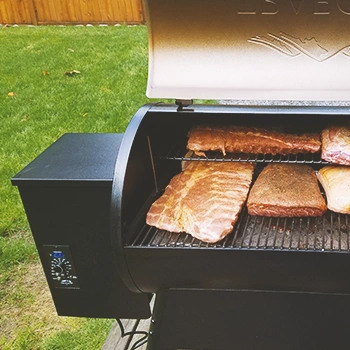
Both pellet smokers and electric smokers are much easier to use than natural wood-fire smoker.
A pellet smoker requires minimal setup and maintenance during the smoking session.
You simply load the pellets into the hopper from your storage container, set the automated temperature control, and let the machine start smoking at the required temperature with minimal supervision.
Electric smokers are also reasonably easy to use, but they require more attention than a pellet smoker.
The electric nature of the smoker ensures your meat is cooked at a consistent temperature, but you'll need to add wood chips to the wood chip tray on an intermittent basis to ensure there is enough smoke.
4. Cost
Pellet smokers are typically more expensive to purchase than a typical electric smoker. This is because they have more complicated hardware and often come with more features than an electric smoker.
Ongoing costs are higher for a pellet smoker as well. Pellets are more expensive than wood chips and need to be purchased on an ongoing basis since they are expended as fuel.
Many electric smokers typically have a lower initial purchase price than pellet smokers, as they are often smaller and have fewer moving parts.
You will have ongoing costs for smoking wood, but this is cheaper than fuel pellets.
Since both types of smokers require electricity to operate, that incremental cost difference is negligible. An electric smoker will probably use about 6 Kilowatt-hours per session [2].
5. Temperature And Versatility
Both smokers are versatile but in different ways.
Pellet smokers are the best of both worlds. You can use them for smoking meat and infusing it with a woody flavor. Or, they can be used as a grill to cook burgers, hot dogs, and other summer favorites.
This is because you can set the temperature for many pellet smokers to cook or sear food at higher temperatures quickly. This allows you to use your pellet smoker for grilling and smoking.
Most pellet smokers have an average temperature range of 180-600 degrees Fahrenheit in the cooking chamber.
"There's grilling, and there's barbecue. Grilling is when people say, 'We're going to turn up the heat, make it really hot and sear a steak, sear a burger, cook a chicken.' Barbecue is going low and slow."
- Guy Fieri, Chef and Author
The heating element of an electric smoker does not get up to the high temperatures required for searing, but you can use it to smoke a wider variety of foods at very low temperatures.
These elements are much easier to control, allowing you to maintain lower temperatures for hours at a time. This is ideal for cold-smoking delicate fish or cheese and to smoke meat.
The average electric smoker's temperature setting ranges from 100 to 300 degrees Fahrenheit.
6. Size And Space
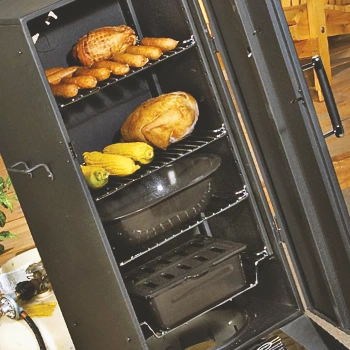
Popular pellet smokers come in a wide range of sizes, from small, portable units to large, freestanding models.
However, a pellet smoker typically requires more space than an electric smoker, as it often has a hopper that needs to be filled with pellets.
Although this smoker comes in a vertical design, they are often built horizontally.
This takes up more space but offers more square inches of cooking space. This large cooking capacity is helpful when hosting parties and outdoor get-togethers.
An electric smoker is smaller and more compact than a pellet smoker. This is because they do not have a hopper for wood pellets, and they use an electric-powered heat source, which eliminates the need for a large firebox.
Electric smokers are vertical smokers and so have a limited cooking area. However, since they are often more compact overall, they are ideal for smaller patios and decks.
7. Moisture
A pellet smoker uses indirect heat for cooking food. That means that the food never directly contacts the heat source. Instead, the heat is circulated around the food, cooking it evenly and slowly.
This indirect cooking method allows for juicier, more flavorful meats and vegetables with less risk of hot spots where food can burn.
Additionally, the pellets have certain moisture content in them as well. As a result, a pellet smoker keeps the meat moist and prevents your food from drying out.
An electric smoker produces very dry heat. To combat this, most popular electric smokers have water pans to help add moisture to the smoking process.
The water turns to vapor and circulates throughout the electric smoker, helping to keep food moist.
To smoke food with additional flavor, I also add other liquids to the water pan, such as apple juice, wine, or beer. However, I’ve learned through trial and error that these smokers may still produce dry food if the water pan runs dry during the meat smoking session.
8. Cleaning And Maintenance

A pellet smoker requires regular cleaning and maintenance. The pellets used as fuel can leave behind a residue of ash. You must empty this ash regularly to prevent it from clogging the hopper or the pellet discharge chute, resulting in auger motor burnout.
Additionally, the firebox, smoking racks, and other parts of the pellet smoker will need to be cleaned after use to prevent rust and other build-ups.
Electric smokers are much easier to clean than pellet smokers. The lack of ash means that cleanup is quick and easy after each smoking session. Additionally, most electric smokers typically have removable racks, drip pans, and water pans.
These parts can be taken out and cleaned separately, making the overall cleaning process more manageable.
9. Safety
A pellet smoker requires burning pellets to create heat and smoke. This open flame can be a safety hazard, especially with small children or pets.
You will want to keep the pellet smoker away from flammable materials such as paper or leaves.
You should never leave your smoker unattended and should keep a fire extinguisher nearby. Finally, because of the fire source, you may not be permitted to use them in apartment complexes.
Electric smokers use electricity to generate heat, so there is no open flame. This makes them safer to use.
However, even the best electric smokers can still pose a safety hazard if not used properly. They should be kept away from water and placed on level surfaces.
Even though these smokers do not generate much smoke outside the casing, you should still only use them outside. However, since they are not a real fire source, you can use them on apartment balconies or backyard smoking.
The Pros of Pellet and Electric Smokers

Both types of smokers are excellent for slow-cooking meats and vegetables. Let's look at some of their most significant benefits:
Pellet Smoker Pros:
- Great smokey flavor
- Easy to use
- It can be used as a grill
- Keeps your food moist
- Larger cooking space
- Wood-fired flavor
Electric Smoker Pros:
- Simple to operate
- Useful for cold-smoking
- Safe to use
- Compact footprint
- Economical to buy and use
- You can use it outside condos and apartments
The Cons of Pellet and Electric Smokers
Of course, no smoker is perfect. Here are some of the disadvantages of each type:
Pellet Smoker Cons:
- Requires more space
- More expensive to purchase and operate
- Needs electricity to run
- Too hot for cold smoking
Electric Smoker Cons:
- Food may dry out if the water pan is not full
- Have to keep adding wood to generate smoke
- Less smokey flavor
- Not used for searing meat
Read More: Vertical vs Horizontal Smokers
Choosing the right smoker can make a big difference in your cooking experience and the taste of your meat. Whether you prefer a pellet, electric, or traditional smoker, it’s important to pick the one that suits your needs.
Carnivore Style offers plenty of tips to help you select the best smoker for your carnivore diet. Be sure to check out our other guides for more insights on perfecting your meat preparation.
References:
- https://energex.com/news/how-are-cooking-pellets-made/
- https://billswiz.com/electric-smoker-electricity-use


